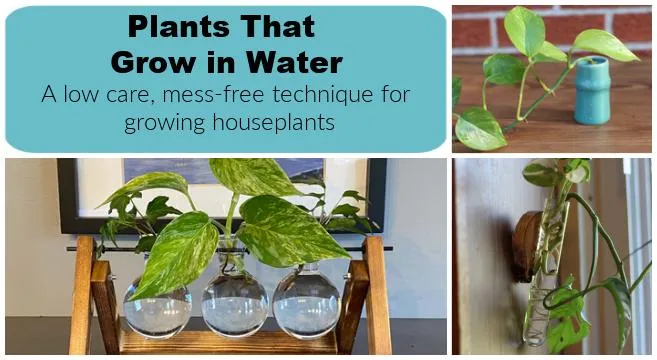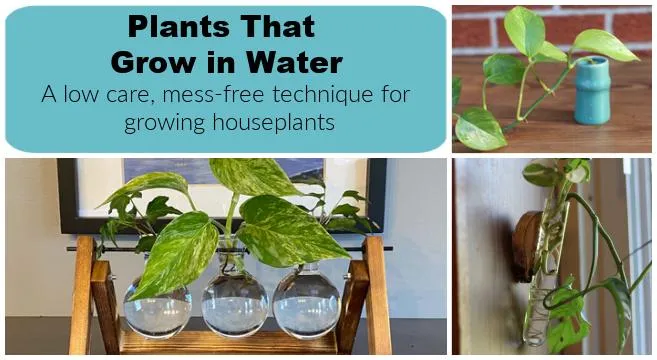The Best Pretty Plants to Grow Indoors
If you’re looking to add some green accents to your home but don’t have access to a garden, indoor plants are the way to go. There are lots of gorgeous options that thrive when grown inside. In this article, I’ll outline some of the prettiest Plants to consider growing in your home and provide tips for caring for each one.
Pothos
- Pothos is one of the hardiest and easiest indoor plants to care for. From my experience, it’s tough to kill a pothos! The trailing vines grow quickly and come in various colors like golden, green, and variegated.
- Pothos does well in low to medium light and only needs watering when the top inch of soil dries out. It’s basically impossible to overwater this plant.
- Let it climb on a moss pole or trellis for a vining effect, or just let it hang over the side of the pot. Pothos looks gorgeous cascading down shelves and hanging baskets.
Peace Lily
- With its delicate white blooms and shiny green leaves, peace lilies are undeniably pretty. They add a lovely pop of color anywhere in your home.
- Peace lilies thrive in medium to low light and like to stay consistently moist but not soaked. I water mine when the top inch of soil is dry.
- When the flowers die back, give it some fertilizer to stimulate new growth. Prune any browning leaves or stems to keep it looking lush.
Spider Plant
- Spider plants are excellent for adding texture and volume to any space. The long grass-like leaves spill over the edges of their pots gorgeously. You can find them in solid green or soft-striped varieties.
- Spider plants flourish in medium to bright indirect light. Water them when the soil is slightly dry and mist the leaves to increase humidity.
- These plants produce small plantlets called “spiderettes” at the ends of their leaves. You can snip these off to propagate entirely new plants to share or keep for yourself!
Snake Plant
- Snake plants, or mother-in-law’s tongue, are nearly indestructible. The stiff, upright leaves add a bold, tropical element to any decor. You’ll love how low-maintenance they are.
- These plants can go weeks without water and still survive! Water only when the soil is fully dry. Let the soil dry out completely between waterings.
- They tolerate low light levels but will grow taller and produce more leaves with more sun exposure. Propagate by dividing leafy offsets from the parent plant.
Chinese Evergreen
- Chinese evergreen comes in several colorful leaf varieties like red, pink, and green. The foliage has an almost waxy texture that adds visual interest.
- Provide these plants with bright, indirect light and keep the soil consistently moist. They prefer high humidity levels, so mist the leaves occasionally.
- Prune off any leggy or browning stems to maintain a bushy shape. Rotate the pot every few weeks so all sides receive equal light exposure.
ZZ Plant
- The ZZ plant is one of the toughest houseplants around. Its stiff, sword-like leaves come in various shades of green with white or dark green variegation.
- They thrive being ignored in low light conditions! Water only when the top few inches of soil are completely dry. Let it truly dry out between waterings.
- Propagate ZZ plants by dividing the root ball in spring or early summer. Repot in a slightly larger pot if it becomes pot bound.
Jade Plant
- No collection of beautiful indoor plants would be complete without a jade plant. The thick, waxy leaves come in different shades of green and have a smooth, rounded texture.
- Jade plants prefer lots of sun and occasionally drying soil. Only water when the leaves start to look shriveled. They are prone to root rot if overwatered.
- To increase your jade plant, take stem cuttings in spring or summer. Allow the cut ends to callous over before planting in soil.
When choosing a pot, go for something that complements the plant and home decor. Terracotta, glazed ceramic, and woven baskets all make nice planters. Be sure the container has drainage holes in the bottom. You’ll want to use a well-draining potting mix. A general houseplant soil works great for most of these plants. Repot only when roots start circling the inside of the container.
Aim to water based on the individual plant’s needs rather than following a set schedule. Allow the top inch of soil to dry out between waterings for many indoor plants. Feel the soil with your fingertip to judge moisture levels or use a moisture meter for accuracy. Cut back on water once growth slows in winter.

Dust leaves occasionally with a soft cloth or paper towel to remove debris. Wipe down leaves with a diluted hydrogen peroxide solution to sanitize. Prune off any dead, diseased, or poorly developing stems. Rotate plants to encourage uniform growth. Expose them to filtered sunlight through a window for best results. Supplement with grow lights if natural light is insufficient.
Consider mounting hooks or plant stands on walls to make the most of vertical space. You can create beautiful vignettes by grouping plants of similar light and watering needs together on shelves or plant risers. Place larger specimens on lower shelves for visual balance. Fast-growing trailing plants like pothos and philodendron are ideal for hanging planters or filling in empty corners.
With a little TLC, these beautiful indoor plants can bring you years of enjoyment. Seeing new growth unfold over time is rewarding. Snip off flower stems on certain plants like spider plants to encourage continuous blooming. Share extras by dividing root balls or taking stem cuttings from the parent plants. Over time, your simple collection can multiply into a lush indoor jungle! Talk to local nurseries for plant care tips customized to your growing conditions. With some trial and error, you’ll develop green fingers in no time.

Top Indoor Plants For Your Home
| Plant | Light Needs | Watering | Growth Rate |
|---|---|---|---|
| Pothos | Low | Let soil dry between waterings | Medium |
| Snake plant | Low | Let soil dry completely | Slow |
| Chinese evergreen | Medium | Water when top inch of soil is dry | Medium |
| Philodendron | Medium | Water when top inch of soil is dry | Fast |
| Peace lily | Medium | Water when soil is dry | Medium |
FAQ
-
What kinds of plants grow well indoors?
Plants like pothos, snake plants, ZZ plants, and peace lilies usually do great indoors. These plants basically don’t need a ton of sunlight to look pretty. Succulents and spider plants are also cool options that don’t seem to mind lower light levels inside.
-
How much sunlight do indoor plants need?
Most indoor plants need at least some sunlight every day to thrive. But they don’t need full-on sun – usually indirect sunlight by a window is good enough. A south-facing window is sort of the best spot. East or west windows work well too. North windows provide too little light for many types of greenery.
-
What growing medium should I use?
Soil made especially for houseplants is generally your best choice. It drains well so the roots don’t get soggy. You can also use regular potting soil mixed with perlite or vermiculite to improve drainage. Peat moss alone works in a pinch. Miracle-Gro soil for indoor & outdoor plants is pretty good. Whatever you use, make sure the roots have room to breathe.

-
How often should I water indoor plants?
The frequency of watering depends on the type of plant and growing conditions. However, it’s usually better to water less than more. Only water when the top inch or two of soil is dry. Some signs a plant needs water include drooping leaves or wrinkled foliage. Use your finger to check the soil depth before watering. Is that fair?
-
What signs show a plant needs more care?
Yellowing or browning leaves could mean the plant needs more light, nutrients or just isn’t suited for indoor life. Wilting stems despite moist soil might point to overwatering. Watch out for pests too – look closely for webs, bugs or spots on leaves. Reacting quickly solves problems. Ask any experts at your local garden store for advice on finicky plants.
-
Are some indoor plants harder to care for than others?
Plants like orchids and gardenias tend to be more difficult than pothos or philodendrons. They demand more specific care. English ivy appears easy but struggles with indoor conditions at times. Ferns also need high humidity. Peace lilies and snake plants might be safer bets for beginners. I think the less temperamental plants are easier to keep happy.

-
How can I get better at keeping plants alive?
Pay attention to sunlight, water and drainage mainly. Read care tags or online guides. Learn from any plant deaths – they teach valuable lessons. Maybe join a plant club or gardening class too for extra help. Fellow plant lovers share knowledge gladly. Over time, observing your plants closely will boost your skills dramatically. Caring for living things takes practice. Keep plugging away!
